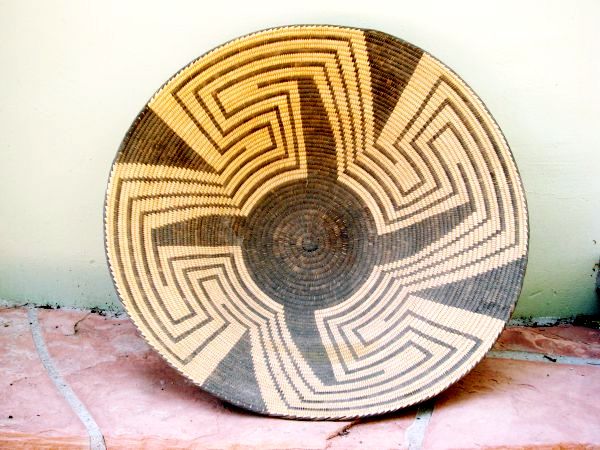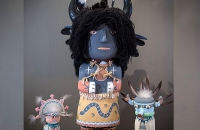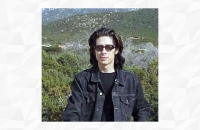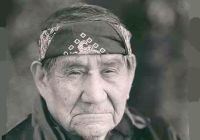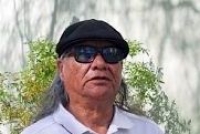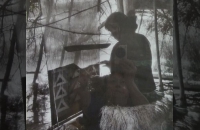PIMA BASKETRY
PIMA (AKIMEL O'DHAM) and PAPAGO (TOHONO O'ODHAM) are desert people who produced magnificent baskets with special characteristics. Until recently, their narrowly-coiled baskets were made of cattail or bear grass and were closely stitched with willow splints. The Pima Tribe believes their ancestors were the ancient "Hoo-hoogam" (Hohokam) meaning "those who have gone" or, the ancient ones. The "Hoo-hoogam" were a farming tribe who inhabited these areas centuries ago and mysteriously vanished. Their unique irrigation route system is used today with Arizona canals. Today, villages of the "Hoo-hoogam" can be seen at different archaeological sites.
The Pima are well known for their basket weaving techniques, intricately woven, they are made watertight. All materials used to create these unique works of art are completely natural and many have disappeared or are just not available due to encroaching civilization, or diminishing sources. The designs on a Pima basket represent a people who respect the environment in which they live.
The materials, which consist of willow shoots, cattails, and devil's claws, must be collected at the proper time of year and selected carefully. The materials must then be prepared by splitting, trimming and shaving to the proper thickness. Then they are soaked for a time allowing them to bend properly.
Pima basket weaving is difficult and very time-consuming. The core of the basket is started with a knot usually using the devils claw (a basket usually begins with a black center). The willow and devil's claw are weaved around the foundation (cattail) used for the white design and the devil's claw is used for the black design.
At the turn of the century, basket weaving was being practiced in every home. This continued into the early 20th century, at which time Southwest Indian basketry became a collectible commodity. The problem was that the collectors and dealers only paid $1.00 to $3.00 for a basket. The women soon realized that it was not practical to spend weeks making a basket when they could pick cotton and earn $2.00 a day. By the 1920s, basket weaving all but disappeared. By 1960, they were not even making baskets for their own use. They had, by then, substituted commercially made pots and pans for utilitarian use.
Today there are few practicing Indian basket weavers who retain these skills and even they will tell you that they are unable to create a basket as fine as the antique Indian baskets of old. In the Southwest, some of the most elegant were those of the Apache and Pima woven in tray or olla shapes using native plant material for the frame and weave.
The basketry tradition has disappeared among many tribes in the Southwest, and among others certain types are no longer made. The beautiful coiled trays and ollas of the Western Apache and the Yavapai and the boldly colored work baskets of the Jicarilla Apache are seldom made. Among the Ute the art is in a precarious state. The Yavapai have only one weaver, who because of age seldom weaves, while the Hualapai have only three remaining. Among the Rio Grande Pueblo people there are a couple weavers at Santa Clara Pueblo, one at San Juan Pueblo, and one at Taos Pueblo who continue to make willow baskets. A woman from Jemez Pueblo is the only Pueblo weaver still making yucca sifters.
The symbol of the Salt River Pima Indian is the Man in the Maze. The legend depicts the experiences which occur during the journey through the maze of life. At the center of the maze are ones dreams and goals and when one reaches the center they are met by the Sun God who passes them on to the next world. Other Pima Native American Indian Basket forms include trays, and Ollas with both animal and human figures.


